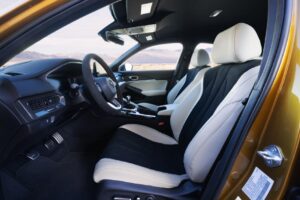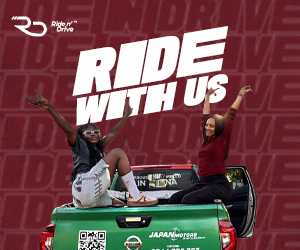Heart-stopping performance, head-turning design. The Integra Type S arrives June 2023.
For those old enough to remember, the 1997-2001 Acura Integra Type R was our gateway to the ultimate in Honda four-cylinder performance. It was packed with the most powerful and revviest B18C that pushed out 195 hp and screamed to 8,400 rpm. It was the closest Americans got to any version of the Honda Civic Type R without breaking import laws in the U.S. until, well, the actual Civic Type R finally came to the U.S. in 2017. Having returned in 2023 after a long hiatus, the Integra sees its ultimate incarnation also resurrected, though this time marketed as a “Type S.” Don’t worry, it’s really a Type R—literally, it’s essentially an Integra with the heart of today’s Honda Civic Type R.
OK, the 2024 Acura Integra Type S is a bit more than that, even though you probably couldn’t tell from its Honda-shading specs, and certainly represents a huge upgrade over the regular Integra. There is a cursory 5-hp advantage given to the Acura’s version of the Type R’s turbocharged 2.0-liter K20C1 engine, which pushes out 320 hp and 310 lb-ft of torque—a 120-hp, 118-lb-ft increase over the 200 hp and 192 lb-ft made by the 1.5-liter turbo I-4 found in every other ‘teg. Like its lesser siblings and the Civic, the Type S is front-wheel-drive.


The two “Type”-grade hatchbacks share the same close-ratio auto rev-matching-capable six speed manual transmission; helical limited-slip differential; torque-steer-icing dual-axis front suspension design; Brembo brakes; and driver-adjustable adaptive dampers. Which will make you wonder: outside of the badges and the Acura’s unique top hat, where are the differences between the Type R and the Integra Type S?
Being a more premium, luxury-leaning brand than Honda, Acura stuffs the Integra Type S with creature comforts you won’t find in the Civic Type R. The interior experience, according to Acura, is still intended to be sporty and “driver-focused,” but the front sport seats appear to be less aggressively bolstered than those in the Civic and are heated. We hope they’re as good at holding the driver in place—and as comfortable as—those chairs in the Honda, even with their more forgiving shapes.


The steering wheel is wrapped in leather, but it’s perforated with coloured stitching and the shift boot matches it. The shift knob itself looks similar to the Type R’s aluminum unit, but is dark anodised and doesn’t have the same matte look as the high-performance Civic’s piece. The metal bezel surrounding the shifter also gets a “Type S” engraved into it. As on the regular Integra, there are bits and pieces here and there throughout the interior that also can be found in current Civics, the Type R included, but the materials are upgraded and the way the shared screens, switchgear, and other components are arranged on the dashboard and door panels is unique to the Acura. Both cars come with a 10.2-inch digital gauge cluster and 9.0-inch colour touchscreen (compatible with wireless Apple CarPlay and Android Auto), but the Acura trades the Honda’s 12-speaker Bose system with a 16-speaker, 530-watt ELS Studio 3D premium sound system. If it’s the same top-notch setup currently offered in the regular Integra’s top A-Spec Technology package trim level, oh boy—because it’ll melt your face.
The 2024 Acura Integra Type S is much wider than the standard Integra, its integrated flared fenders delivering a 2.8-inch girth expansion for an overt wide body look. The 19-inch wheels wrapped in 265/30R19 Michelin Pilot Sport 4S tires offer more grip and are inspired by the 10-spoke rims offered on the NSX Type S supercar, right down to their Shark Grey hue. Despite the increased diameter over the Integra A-Spec model’s wheels, the Type S rollers are two pounds lighter and reduce the rolling mass for better acceleration.
We already mentioned the new Brembo brakes, in which squeeze rotors 1.5 inches larger than stock, while the rear rotors are 0.9-inch bigger. Brake cooling pathways directly influenced the Type S’s nose shape, and there are functional ducts at each corner aimed at each front rotor.
You might have noticed a key Type R feature is missing out back. Where the Civic Type R wears a towering wing on its hatch, the Integra Type S uses a far more subtle deck-lid spoiler. This gives the Type S a much cleaner side profile and looks far less “boy racer” than the Civic, so those looking for a more mature appearance will appreciate it. We wonder what aerodynamic affect the smaller deck-lid spoiler has on the Acura’s higher-speed downforce, and whether it’s offset by the larger rear diffuser.
Other elements on the body are toned down relative to the Acura’s Honda cousin. There is no fender vent behind each rear wheel, for example, and the rocker panel extensions are body colour, not black. What little gloss black trim can be found on the Type S is relegated to the grilles, rear license plate nacelle, and window trim.
In fact, other than the wider fenders, the hood’s heat extractor, the sculpted rear diffuser, triple center-exit exhaust, red brake callipers, and “Type S” badging, there isn’t a whole lot giving away that this highest performance Integra out there. Viewed from the side, it almost looks like a regular Integra with aftermarket wheels, so you’d be forgiven for thinking it’s nothing special. Well, that is, until the 320-hp Integra peels away from you when the light turns green. Hey, with Civic Type R hardware, expect Civic Type R performance—look for a low-five-second zero-to-60-mph time, well over 1 G of lateral grip, phenomenal near-100-foot stopping distances from 60 mph, and otherworldly handling and balance for a front-driver.
Having driven the Type S in prototype form late last year, we can say this: There are worse performance machines to take after, after all…
Source: motortrend




